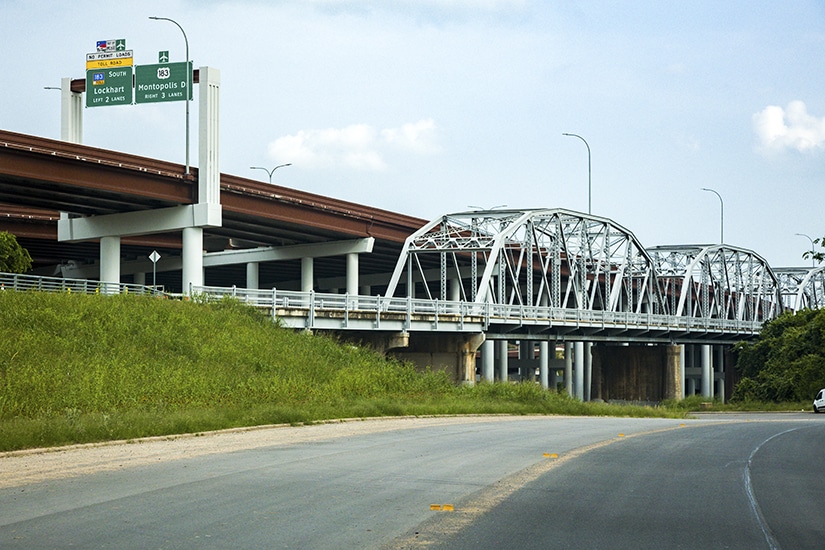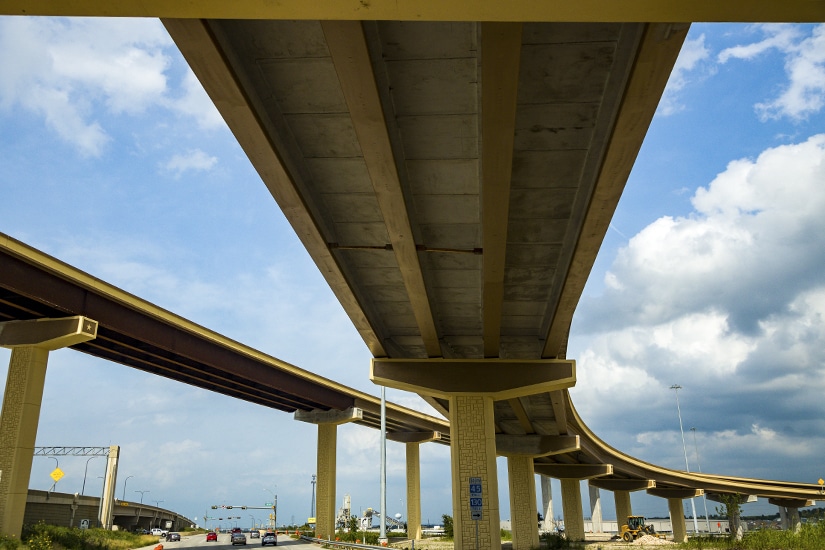|
Getting your Trinity Audio player ready...
|
It was 30 years ago when a young construction inspector stood on a bridge pouring concrete into a bent cap 60 feet above the Colorado River. Fast forward to 2021, and that same man, Lloyd Chance, is now assistant director of engineering and construction at the Central Texas Regional Mobility Authority.
He’s using the bent cap he poured in 1992 to build a bridge across the river. Chance has spent his entire career improving the transportation system in Austin, Texas’ Williamson and Travis counties, and the projects he leads will continue to impact the region for years to come.
Chance remembers watching heavy machinery and playing in the dirt and the mud as a young child growing up in the Austin area. In some ways, he does the same thing today. “I just get up every day and break rocks,” he says. “Consistency is key.”
Consistent is perhaps the exact right word to describe Chance. He was born in Georgetown, Texas, and grew up about 60 miles away in San Marcos, watching his father’s long career as a maintenance foreman and supervisor for the Texas Department of Transportation (TxDOT). Chance and his brother both followed in their dad’s footsteps and joined the state department. The three Chances have a combined 84 years in the organization.

Chance, an Air Force veteran who was a construction inspector, design technician, and project administrator at TxDOT, says the work is fulfilling because it improves life for people and communities in and around Austin. “We get to see the real impact of what we do and the economic results and other benefits it brings,” he explains.
In 2017, Chance left to oversee the construction of Central Texas Regional Mobility Authority projects. The Mobility Authority is an independent government agency that operates express lanes and toll roads in Central Texas. Chance’s background made him a valuable hire and helps the Mobility Authority coordinate with TxDOT as a key partner on all large projects.
The organization is currently addressing two major initiatives. The 183 South project delivers passengers to and from Austin-Bergstrom International Airport with increased efficiency while the 183 North project will connect commuters with the city’s vibrant downtown area.
183 South is a $600 million design-build project through which the Mobility Authority converted a four-lane divided highway into six toll and six non-toll lanes to completely transform an outdated corridor into a safe and fast-moving freeway system. The enhancements are the area’s first major upgrades since the 1970s, and drivers can now reach the airport and other local destinations with no stops and fewer delays. The second major phase opened in 2021 and supports east Austin’s need for economic revitalization in the wake of the COVID-19 pandemic.

At 183 North, Chance and his colleagues are starting construction of a $600 million design-build project that will improve one of the most congested roadways in Texas. They will widen the nine-mile corridor and provide two express lanes and four non-tolled lanes in each direction. The move, Chance says, will give residents from the growing northwest metro side more reliable connections to downtown Austin and major shopping centers like the Domain. Plans include new shared use path connections, new sidewalks, and cross-street connections for bicycles and pedestrians. Construction will begin in 2022 and will be complete by 2026.
The Mobility Authority introduces sustainable initiatives into all its projects. One recent project, State Highway 45 Southwest, shows the true impact of these measures. The four-lane toll road not only reduced congestion but also improved air and water quality as it introduced a new route to limit traffic on residential streets. Chance and the Mobility Authority coordinated with TxDOT and McCarthy Building Companies Inc. to build the highway through sensitive areas like the Edwards Aquifer Recharge Zone with limited environmental impact.
Because the aquifer supplies drinking water to residents of San Antonio and Austin, many people thought completing the project was impossible. Chance thought otherwise. “There is an engineering solution to everything if you’re willing to put the time, money, and effort into it,” he says, adding that special working groups spent many hours devising an innovative plan to complete the project.

The team built the highway above the existing ground and changed the grade to match needs with limited digging or excavation. Permeable friction course pavement filters suspend solids and pollutants from stormwater while roadside vegetative filter strips treat roadway runoff before directing it through grassy swales to eight detention ponds. The group also installed solar LED lights at trailheads and took various steps to minimize long-term disturbance to plans and wildlife. In 2020, the American Society of Civil Engineers’ Texas section gave the project its outstanding civil engineering achievement award of merit.
As Chance drives around the Austin area, he’s proud to see the community impact his family has made over the years. “This region has changed a lot, and it’s rewarding to know that we’ve played a small part in it,” he says. Chance isn’t just breaking rocks; he’s using those rocks to build important structures that make a real difference in the lives of the people around him.


